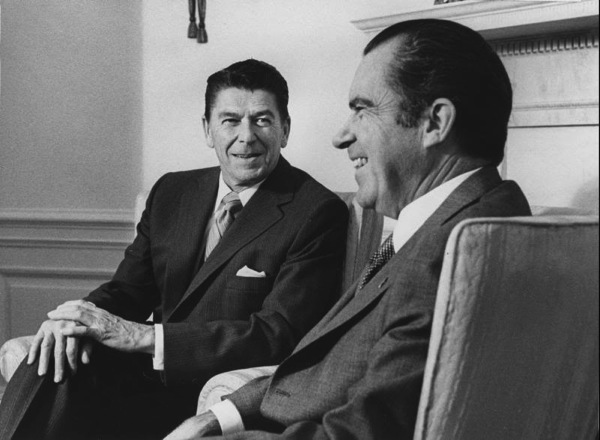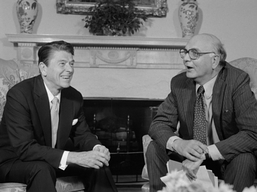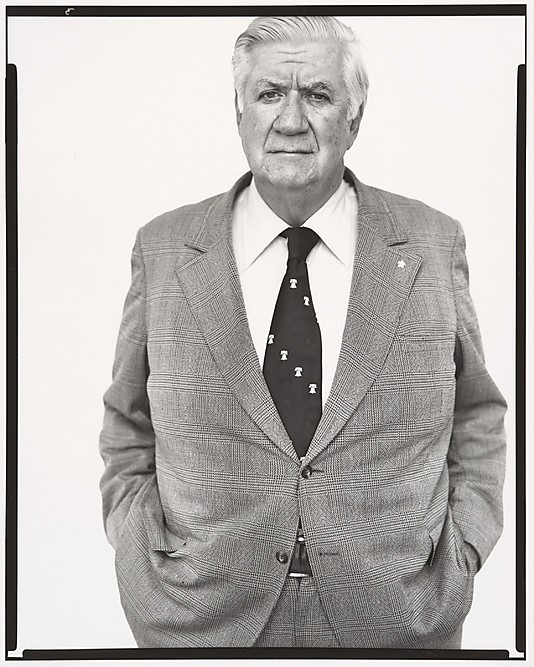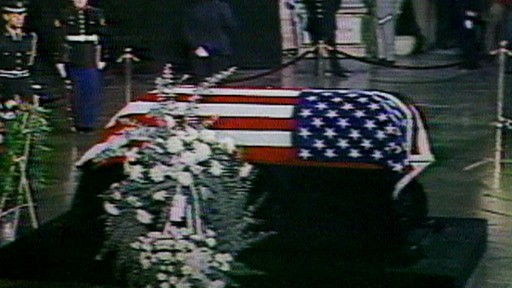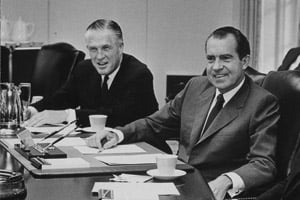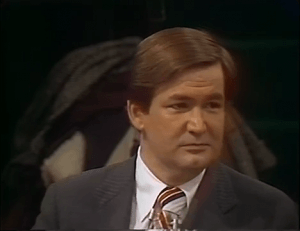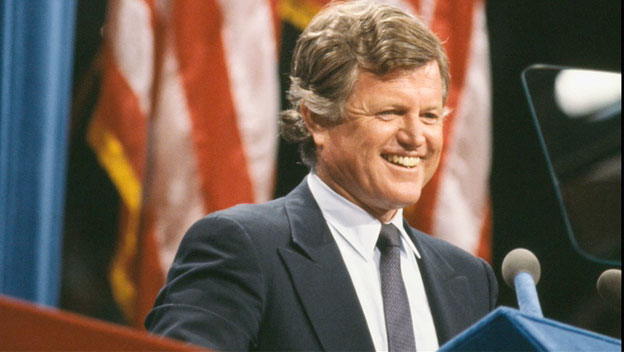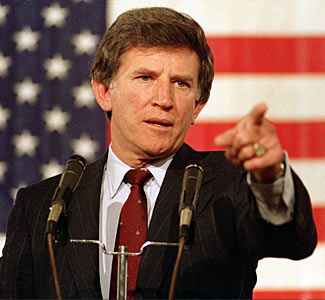POD: Senator Thomas Kuchel runs for Governor of California and Nixon runs for his old senate seat in 1962.
1962: Former Vice President Richard Nixon runs for his old senate seat and narrowly defeats his Democrat opponent 53-47%, thanks in part to the public perception of him as a senior statesman whose services in the Senate are needed during the Cuban Missile Crisis.
Kuchel loses to Pat Brown 49%-50%.
1963: Nixon returns to the Senate and plans to be a favorite-son presidential candidate from California in 1964 and use this block of delegates to be a power broker in deciding who the nominee will be.
1964: Nixon runs unopposed as a favorite-son presidential candidate from California and tries to work with Rockefeller, Romney, and Scranton to Stop Goldwater. This effort ultimately fails and Goldwater narrowly wins the nomination on the first ballot at the Republican National Convention in San Francisco. Nixon wins over 100 votes and places third, even though he had never been an active candidate.
Nixon campaigns hard for Goldwater and other Republicans in the general election and while the GOP loses in a landslide, one bright spot is the Republicans winning the other Senate seat from California with the election of George Murphy.
1965: Nixon generally opposes Johnson's domestics policies and leads several efforts (some successful and some not) to amend or defeat Johnson's bills.
1966: The Republicans make major gains in the midterms and Nixon is a major beneficiary of this success since he has campaigned harder than anyone else for the GOP around the country. Nixon's stock is particularly high in California, where is efforts helped the GOP sweep the state. Nixon had backed George Christopher over Ronald Reagan for Governor, but after Reagan won the primary, he campaigned actively on his behalf.
1967: Nixon prepares for a run in 1968 with California, center-right Republicans, and party county and state chairmen as his base of support.
Nixon also offers Reagan a deal. If Reagan will endorse and support Nixon in 68', Nixon will back Reagan in 72' or 76', also if Nixon fails to win a majority on the first two ballots at the Republican National Convention in 1968, he will step aside for Reagan. Reagan agrees.
In the fall, Nixon is struck by a taxi in New York City and spends three months in a wheelchair and physical therapy. These critical lost months of campaigning will cost him dearly in 1968.
1968: Nixon kicks offer his primary campaign with a strong win in New Hampshire with 57% of the vote. Nelson Rockefeller beats George Romney for second place 21%-14%.
In April, Nixon easily wins Wisconsin and Rockefeller easily wins Massachusetts. Pennsylvania is closer with Rockefeller narrowly winning 41-38%.
In May and June, Nixon wins 5 primaries to Rockefeller's 2.
On June 4, as he is leaving his victory party at a Los Angeles Hotel, Nixon is shot by a Palestinian named Sirhan Sirhan. Although he survives, he will be in the hospital for a month and physical therapy for months after that. The day he was shot, Nixon was the presumptive nominee of his party, after it became clear that he could not continue with the rigors of campaign, he began looking for a candidate to run in is place.
Nixon decided that Rockefeller was unacceptable to his conservative supporters while Romney was tarnished by a weak primary performance and gaffes.
This left Ronald Reagan....

At the National Convention in Miami, Nixon was given a 15-minute standing ovation by the delegates and used this goodwill to help unite the party. The party adopted a moderate-conservative platform, nominated Reagan for President over Rockefeller and Romney, and than Romney for Vice President.
The Reagan/Romney ticket leaves the Republican national convention with a strong lead over Humphrey and Wallace 43-35-12.
The Democratic National Convention was a scene of violent confrontations between police and anti-war protesters as the Democrats split into multiple factions.
Humphrey won the nomination narrowly over Bobby Kennedy and Gene McCarthy. Humphrey chose Senator Ed Muskie as his running mate as LBJ vetoed picking Kennedy.
Reagan runs on a campaign that promised to restore law and order to the nation's cities and provide new leadership in the Vietnam War. A year later, he would popularize the term "silent majority" to describe those he viewed as being his target voters.
George Wallace's support drops fast among conservatives who gravitate towards Reagan. Wallace resists calls to withdraw and maintains 8-12% in the polls throughout the fall.
Reagan challenges Humphrey to debate but Humphrey declines unless Wallace is excluded. The problem is solved when Wallace drops out in early October.
The two campaigns finally agree on a single debate to be held the Sunday before the election.
Reagan was seen as the underdog going into the debate but shocked the press with an excellent performance. He also looked much healthier and vigorous than Humphrey on the color TV sets that many Americans were watching on.

On Election Day, Reagan won by a surprisingly large margin in both the popular and electoral vote.
The Republicans make substantial gains in the Congress as well, gaining Senate seats in Arizona, Florida, Indiana*, Maryland, Ohio, Oklahoma, Oregon, and Pennsylvania; while holding all their existing seats, including California* (Where Lt. Governor Bob Finch was elected to succeed Nixon), and Iowa*.
Republicans also gain 19 seats in in the House. Notable freshman include future Governor and Senator Kit Bond of Missouri, and David Treen of Louisiana (who defeated House Majority Whip Hale Boggs).
91st Congress (1969-71)
Senate
President pro temp: Richard Russell
Senate Majority Leader: Mike Mansfield
Senate Majority Whip: Ted Kennedy
Senate Minority Leader: Everett Dirksen
Senate Minority Whip: Hugh Scott
House of Representatives
Speaker of the House: John McCormick
House Majority Leader: Carl Albert
House Majority Whip: Tip O'Neill
House Minority Leader: Gerald Ford
House Minority Whip: Leslie Arends
*Change from OTL.
Infoboxes by Pug
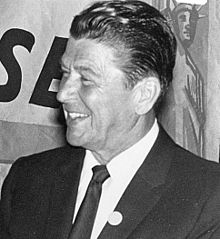
1969: On January, 20th 1969, Ronald W. Reagan was sworn in as the 37th President of the United States of America. In his Inaugural Address, meticulously crafted by former Nixon speechwriter, Pat Buchanan, spoke to heal all the nation's wounds, in which the best part of the speech was when he alluded back to his “A time for choosing” speech from ’64 when he said…”I have faith that you have the ability and the dignity and the right to make your own decisions and to determine your own destiny…Thank you, may God bless you and God bless America.”
Reagan wanted to appoint Barry Goldwater as Secretary of Defense, but push back from liberal Republicans caused him to settle on Congressman Mel Laird.
Secretary of State: Richard M. Nixon
Secretary of Treasury: John Connally
Secretary of Defense: Mevin Laird
Attorney General: Sprio Agnew
Postmaster General: Winton M. Blout
Secretary of Interior: Wally Joseph Hickel
Secretary of Labor: George P. Shultz
Secretary of Agriculture: Clifford Hardin
Secretary of Commerce: Maurice Stans
Secretary of Health, Education and Welfare: Nelson Rockefeller
Secretary of Housing and Urban Development: Daniel Patrick Moynihan
Secretary of Transportation: John A. Volpe
White House Chief of Staff: Edwin Meese
The first obstacle that President Reagan faced was not only how to end the War in Vietnam but under what circumstances could the United States “win” the War.
On January 21st, 1969, President Reagan informed Hanoi that the U.S. was prepared to agree to a ceasefire and withdraw its forces from South Vietnam if the North would agree to withdraw its forces and recognize the South as an independent nation. Reagan when the North refused, Reagan ordered the U.S. delegation in Paris to leaves the peace talks.
Reagan, acting on advice from former President Eisenhower, and General of the Army Omar Bradley, ordered the Pentagon to prepare a plan for the invasion of North Vietnam. Reagan also ordered the U.S. Air Force to begin a policy of unrestricted bombing. Within two weeks, great damage had been done to vital targets including dams which (after bombing) flooded the countryside doing great damage to food production. The U.S. Navy also mined all navigable North Vietnamese rivers and harbors. U.S. Marines and Special Forces also invaded Laos and Cambodia to destroy enemy supplies and staging areas.
Hanoi and its allies screamed about “war crimes” and Reagan was advised by many, including Nixon, to relent. Reagan refused to back down, however, and ordered General Abrams to prepare to execute at two-pronged invasion of the North (one by land and one by sea) with a target date of June 1.
The invasion was not to be, since on March 28, 1969 North Vietnam announced it would accept the U.S. terms of withdraw and recognition. The decision had been reached when Hanoi had been forced to ask China and Russia for more assistance and had been denied. Moscow and Peking agreed that it was to dangerous to risk losing all of Vietnam to a U.S. counter attack.
The agreement was signed by the leaders of the official delegations on April 18, 1969, at the Hotel Majestic in Paris, France.
After the Peace Accords, Reagan’s approval ratings shot passed 70% and he gained great political capital for his domestic agenda.
On the domestic front, President Reagan during his first term largely kept true to his rather conservative instincts.
On the economy, Reagan worked hard with his widely respected Treasury Secretary John Connally and his deputy Milton Friedman. In August of 1969, Reagan signed a 5% tax cut to help stimulate the sluggish economy. The success of the effort helped win Reagan over to what would later be called “Supply-Side Economics”.
In September 1969, Senate Minority Leader Everett Dirksen died and Senator Howard Baker was elected to succeed him as leader.
President Reagan also formed the Gates Commission to look into ending the military service draft implemented under the preceding President. The Gates Commission issued its report in February 1970, describing how adequate military strength could be maintained without having conscription. The draft was extended to January 1973, though it was not continued after that and no more draftees were called up after July 1969. Military pay was increased as an incentive to attract volunteers, and television advertising for the United States Army began.
Reagan also began a plan of strategic missile defense which would later become know in 1980’s as “Star Wars” when it was revived by President Nixon.
Another crowning achievement of President Reagan on the economy would be the appointment of Democrat economist Paul Volcker to become Chairman of the Federal Reserve. With rising Inflation as a result of years of pursing “Obsolete” New Deal and “Cumbersome” Johnson Programs as well as a faltering gold standard, Reagan needed someone who was willing to make new bold decisions on the economy. After a long list of candidates, the economist from New Jersey was chosen to replace the retiring Fed Chair William Martin, Jr., in early 1970 and it was soon realized how bold this new chair would be. Two of Volcker crowning achievements in the first term, One would be his decision to suspend the gold convertibility in 1971, thus resulted the crash of the Breton Woods system. Volcker and Secretary of Treasury Friedman would often have words on some aspects on policy, but he generally advocated an international solution to monetary problems. His other achievement would be staving off an future Inflation problem, which Reagan saw as “Impending crisis which if it would have been allowed to continue unchecked would have slowed the American Economy to a crawl within ten years.” By instead of the widely popular idea of targeting interesting rates, Volcker went against the consensus and focused on limiting the growth of the money supply. This decision would ensure Volcker’s tenure as Federal Reserve Chairman for many years to come. Reagan was also advised to institute wage-and-price controls by his more liberal advisers but refused to do so. Reagan also created a commission to study how to reestablish a gold or a similar system to combat inflation**
On the ERA, Reagan became the target of many women’s groups for not coming out openly of supporting it after its passage through Congress in 1971 and for keeping his “Leave it up to the States” policy. ERA would pass the Congress in 1975, only to be defeated during the ratification process.
Reagan also left his mark on the federal judiciary, appointing Associate Justice John M. Harlan to succeed Earl Warren as Chief Justice. Next, Reagan appointed Warren Burger to fill Warren's seat. Reagan's first two appointments attracted little opposition, but his third did. On the advice of his conservative advisers, Reagan appointed Virginia Supreme Court Justice Albertis Harrison to fill the seat of Abe Fortas. Harrison had been a close ally of Senator Harry Byrd, Sr. and his segregationist past made his nomination a very tough battle. In the end, Harrison was confirmed 51-50, only after Vice President Romney (against his better judgment) broke the tie in the Senate
1970: On Civil Rights, President Reagan during his first term had more of a mixed message as opposed to his strong achievements in the foreign policy and economic arenas. Initially, the 37th President received rave reviews when he nominated the Nelson Rockefeller to head HEW and Daniel Patrick Moynihan, to the position of HUD Secretary. However any hopes that President Reagan would be some type of freedom rider for Justice soon became dashed. Reagan showed a relative libertarian approach when it came to desegregation in the South. Strategically, Reagan knew he had to count on the votes of conservative White Democrats to win the 1972 election, and that if he took any hard-line to enforce desegregation, he might very well loose the South to either the Democrats or even more likely another third party run by George Wallace. If there was one thing Reagan was adamantly opposed to, it was forced school busing, and the President made sure to tell voters on his position especially when he was on the stump during the 1970 congressional elections. President Reagan and his policy of Benign Neglect suggested to him by his HUD Secretary Daniel Patrick Moynihan via memo that “the issue of race could benefit from a period of 'benign neglect'. The subject has been too much talked about....We may need a period in which Negro progress continues and racial rhetoric fades." This policy soon proved to be wrong as the summers in Northern Cities remained Hot during Reagan’s 1st term as the influence and power of Black Nationalist groups continued to strengthen. President Reagan and Attorney General Agnew would use every means necessary as given to them by the federal arsenal in order to hush the voices of dissonance in the minority populace.
The 1970 Midterm Elections
In the midterm elections, Reagan and the Republicans made history by gaining control of the House and Senate, this marked the only second time since the Civil War that an incumbent president's party gained seats in a midterm election.
The takeover was added by the defection of several Democrats from the south to the Republicans.
The Republicans make substantial gains in the Senate as well, gaining Senate seats in Connecticut, Delaware, Indiana*, Maryland, Missouri*, Ohio, Tennessee, and Virginia*; while holding all their existing seats. In California*, Senator George Murphy retired and was replaced by former L.A. Mayor Sam Yorty (who had changed parties to run as a Republican). In Illinois*, Senator Donald Rumsfeld is re-elected narrowly over Adlai Stevenson III.
One notable bright spot for the Democrats was Bobby Kennedy's easy victory in New York.
Republicans also gain 20 seats in in the House (including 14 Southern Democrat defections).
Notable House Republican freshmen include Jack Kemp (CA34).
Notable gubernatorial elections included Alabama (George Wallace), Califorina (Ed Reinecke re-elected), Florida (Reubin Askew), Georgia (Jimmy Carter), and Texas (Paul Eggers).
92nd Congress (1971-73)
Senate
President pro temp: George Aiken
Senate Majority Leader: Howard Baker
Senate Majority Whip: Hugh Scott
Senate Minority Leader: Ted Kennedy***
Senate Majority Whip: Robert Byrd
House of Representatives
Speaker of the House: Gerald Ford
House Majority Leader: John Rhodes
House Majority Whip: Robert Michael
House Minority Leader: Carl Albert
House Minority Whip: Tip O'Neill
*Change from OTL.
**Reagan's policies prevented the creation of the Libertarian Party in 1971.
***Kennedy's reputation is much stronger since there is no Chappaquiddick in this TL.
1971: In January 1971, Reagan revealed the Total Economic Reconstruction of Family Assistance (or TERFA) and was sent to Congress for the vote. By a margin of 218-212 in the House and 61-39 in the Senate, the Congress passed enhanced TERFA called for implementation a single system which accomplished both the funding of government and the social goal of ensuring a minimum level of income. In the presence of the TERFA, inasmuch as that the social goal is reached, it potentially removed the need for minimum wage, food stamps, welfare, social security programs and so on, while requiring a fraction of the administrative effort, and avoiding the pitfalls and perverse incentives which exist in systems with overlapping aid programs. A worker under TERFA always gets the same portion of each marginal dollar earned, so there is always an equal incentive to work. Finally the TERFA System would reduce administrative overhead, since the large bureaucracies responsible for administering taxation and welfare systems could be eliminated. The plan was opposed by both hard-line conservatives and New Deal and Great Society liberals. In the end, the plan only narrowly passed when Senator Robert Kennedy joined with Republicans and conservative Democrats to break a filibuster of the plan lead by Senator George McGovern. Upon signing of the Bill, President Reagan stated that “Although this is a crowning achievement, in which that the founders of this great nation would be proud…We know that it is not perfect, and I look forward to in the future working with Congress to making sure that this system remains a success.”
Finally, On the Final Frontier, President Reagan made it very clear during the ’68 campaign that he would be enthusiastic about NASA and promised an expansion for the Space Program. On July 19, 1969, astronaut Buzz Aldrin and Neil Armstrong became the first humans to walk on the Earth's moon, while fellow astronaut Michael Collins orbited in the Apollo 11 command module. Reagan made what has been termed the longest-distance telephone call ever made to speak with the astronauts from the Oval Office.
In spring 1971, a plan to overthrow Fidel Castro began to take shape, with a group of Reagan aides known as the "Plumbers" using private funds from right-wing businessmen to fund Cuban anti-Castro terrorist/"freedom fighter" groups in going to Cuba and causing trouble.
In September 1971, Chief Justice John M. Harlan and Hugo Black resigned from the Supreme Court for health reasons. Reagan promptly appointed Deputy AG William Rehnquist as Chief Justice and Solicitor General Robert Bork as Associate Justice.
With his approval rating floating around 70%, a Republican takeover of Congress in the ’70 election, Vietnam technically won, and a string of successful Apollo missions to the Moon…The 60 year old President declared that he would seek reelection on July 4th, 1971. Also within the speech, Ronald Reagan announced that he would be sending to Congress a bill which would allow for an expansion of NASA’s budget in order to pay for NASA ambitious plan that called for the establishment of a lunar base and a massive space station in Earth orbit before the end of the 1970s, culminating in a manned mission to Mars as early as 1981. With a rejuvenated NASA, tolled into the costs of continual aid to the South Vietnamese, and the creation of the TERFA system, the American People experienced one of the largest tax hikes in history…but President Reagan was able to reassure voters that if reelected that “Relief will soon be on the way, because America’s future rests in a thousand dreams inside your hearts.”
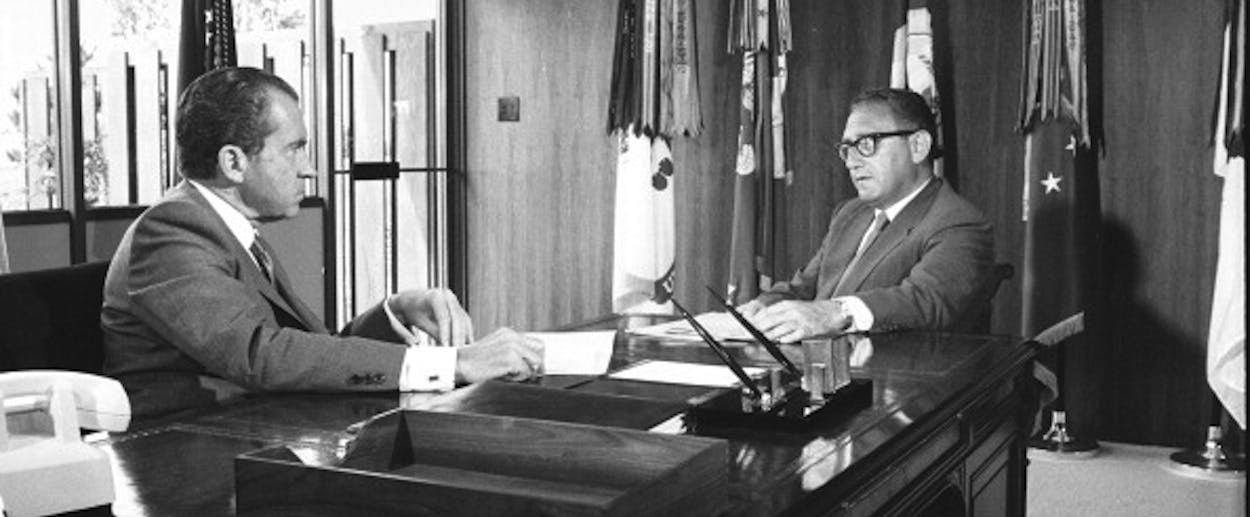
1972
Sectary of State Richard Nixon and his Deputy Henry Kissinger begin to make overtures to China with Reagan's support. Reagan insisted that he not be seen as willing to "open China' until after the election.
Treasury Secretary John Connally resigned in early 1972, to Chair Reagan's re-election campaign. Connally was replaced by his deputy Milton Friedman.
1972 Democratic Nomination
By mid 1971, as President Reagan’s approval rating held pretty steady the mid 50’s to low 60’s in most of the country, due to his strong foreign policy achievements and a strong economy at home. This perceived strength, caused many leading Democrats like Bobby Kennedy, Ted Kennedy, Ed Muskie, Hubert Humphrey, and George Wallace to skip the race. This opened the Democratic Field to a large number of largely unknown candidates, each hoping to win their party’s nomination and rebound it from the chaos of the 1968 Convention in Chicago.
Congresswoman Shirley Chisholm of New York
Senator Fred Harris of Oklahoma
Senator Henry “Scoop” Jackson of Washington
Mayor John Lindsay of New York
Senator George McGovern of South Dakota
Former Senator Eugene McCarthy of Minnesota
Congressman Wilbur Mills of Arkansas
Congresswoman Patsy Mink of Hawaii
Former Governor Terry Sanford of North Carolina
The media considered Jackson, Lindsay, McCarthy, and McGovern as front-runners with Sanford and Harris as dark-horses and Chisholm, Mink and Mills as favorite-son/daughter candidates.
McGovern won the Iowa caucuses in an upset over McCarthy.
John Lindsay won the Arizona caucus five days later with McGovern close behind.
In New Hampshire, Lindsay and McCarthy had been front-runners, but after McGovern's win in Iowa, his stock was rising in the Granite State. On primary day, Lindsay narrowly won the primary with McCarthy and McGovern close behind. This win caused most media outlets to declare Lindsay the front-runner.
So the media focused in on Florida, a state in which Representative Shirley Chisholm vigorously campaigned in since her early entry into the race in 1971. Senator Scoop Jackson would come to win Florida with 29% of the vote, with Lindsay placing second and, in a shock finish, Chisholm finished third, narrowly edging Sanford, based upon high black voter turnout (as a result of her extensive campaign in the state).
Lindsay won Illinois in late March while McGovern won Idaho and Vermont.
In the next major primary, Wisconsin, Although McGovern ultimately won the state, Chisholm finished third with 18% of the vote. Jackson matched this with a victory in Pennsylvania.
Jackson then began a winning streak with victories in Indiana, Ohio, and Tennessee. Terry Sanford won North Carolina as a favorite-son but had very little support elsewhere.
Representative Chisholm came away with surprise wins in Massachusetts and Maryland in May. Her win in Maryland. Chisholm also won two caucuses in the South.
McGovern won the final major contest with his win in the Californium primary over Jackson.
Green-Jackson Red-McGovern Blue-Lindsay Brown-Chisholm Light Blue-McCarthy Yellow-Favorite-Sons
At the convention in Miami, 1507 delegates are needed for victory. Jackson had 1000, McGovern has 700, Lindsay has 500, and Chisholm has 450, with the rest scattering. Lindsay was seen as a turncoat Republican by many party activists and seemed unlikely to be nominated. Jackson was seen as too conservative by the liberal forces who united to support a McGovern/Chisholm ticket in a 'stop Jackson' movement; however, Chisholm extracted a bargain of pledged support in 1976 or 1980 from the party machine. Finally, after a few rounds of balloting, it soon became clear that Senator George McGovern would be the Democratic Party’s nominee for President. Shirley Chisholm was then nominated for Vice-President. McGovern would later admit that the choice of Chisholm was not politically wise, but he knew by that point that he had virtually no chance of beating Reagan and wanted to make history in his choice of a running-mate as well as help advance the interests of women and minorities in the Democratic Party.
1972 Republican Nomination
After they declared their intention to seek a second term on July 4th, 1971 the ticket of Reagan/Romney ran unchallenged through the primaries. Despite grumblings in the moderate wing of the party, no serious challenge was mounted. Although a popular Incumbent President, Reagan would insist on openly campaigning, to show the American People that for a couple of older gentlemen, the ticket could still campaign with the best of them. That decision would come back to haunt Ronald Reagan, While in Frederick, Maryland on May 15th, 1972, the 37th president was fired upon four times by the crazed Arthur Bremer. While two of the Bullets harmlessly fired into the air, two of them hit the president as one pierced his left lung, narrowing missing his heart and the other grazed his left shoulder.
After having emergency surgery to remove the bullet, Reagan joked to the surgeons, “I hope you are all Republicans!”, although they were not, one of the surgeons replied back, “Today Mr. President we’re all Republicans.” After a temporary transference of power to Vice President Romney, American’s were relieved to find out that the operation was a success and that the Gipper was in high spirits. It was reported, when First Lady Nancy Reagan came to see him in the Hospital, the President told her “Honey, I forgot to duck.” Nancy however was still furious and asked Chief of Staff Edwin Meese, “How could this have happened!” Security around the President became tighter than ever as he discontinued all of his planned campaign stops, taking time to full recover. By the time the convention rolled around, the President’s approval rating’s sky rocketed to 75%, with his re-nomination secured by acclamation and chants of “Four More Years!” The Charismatic President simply replied back, “Ok, I’m willing if you are!”
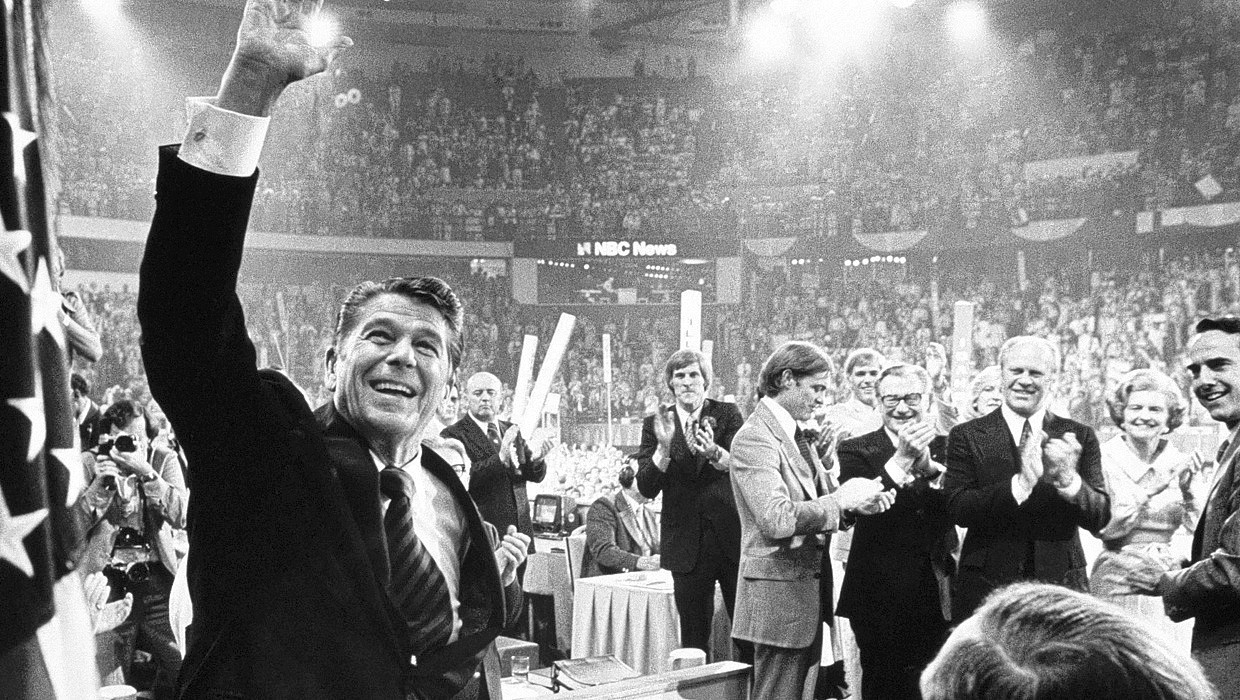
President Reagan receives a tumultuous welcome at the 1972 Republican National Convention
The 1972 General Election
With the Approval Rating of the Incumbent President still in the mid ‘70’s at the start of the General Election, it was the job of the McGovern/Chisholm campaign to play catch up. The Democratic ticket ran on a campaign on a platform in favor of Desegregation, education reform and promising a return to the Great Society programs of the ‘60’s, in an appeal to the fraying New Deal coalition, those on the New Left and Minority groups.
On the Republican Side, most of the actual campaign on the stump was done by surrogates from the administration. President Reagan would actually appear in a few heavily guarded campaign stops, while Vice President Romney and others went out to promote the president's ideals to the American people. In the media, most of the campaign spots, would convey a sense of “Morning in America”, promoting the administration’s achievements on Vietnam, a strengthened economy, and a restoration of Law and Order at home.
Reagan and McGovern debated three times. The debates were fairly cordial. The highlight of the debates was the Romney-Chisholm VP debate, the first of it's kind, which saw Romney tripping over himself trying not to come across as sexist or racist.
By November 7th, the result was a forgone conclusion. President Reagan would be reelected in a landslide victory on all accounts, as he won every state except Massachusetts and secure more than 60% of the popular vote. On election night, President Reagan answered the chants of “Four More Years!” from his loyal supporters with his charm, “I think that has just been arranged!”
The Democrats managed to avoid heavy Congressional losses to the Republicans gaining Senate seats in Iowa, Maine, and South Dakota. The Republicans held onto vulnerable seats in Colorado*, Delaware*, Kentucky*, and Michigan, as well as gaining seats in Montana*, New Mexico, North Carolina, Oklahoma (Jim Inhofe), Virginia.
Republicans only gain 12 seats in the House, thanks in part to many Democrats abandoning McGovern and actively associating themselves with Reagan.
93rd Congress (1973-75)
Senate
President pro temp: George Aiken
Senate Majority Leader: Howard Baker
Senate Majority Whip: Hugh Scott
Senate Minority Leader: Ted Kennedy
Senate Majority Whip: Robert Byrd
House of Representatives
Speaker of the House: Gerald Ford
House Majority Leader: John Rhodes
House Majority Whip: Robert Michael
House Minority Leader: Carl Albert
House Minority Whip: Tip O'Neill
*Change from OTL.
Source: President Reagan - in 1968
Infoboxes by Pug
Last edited:
